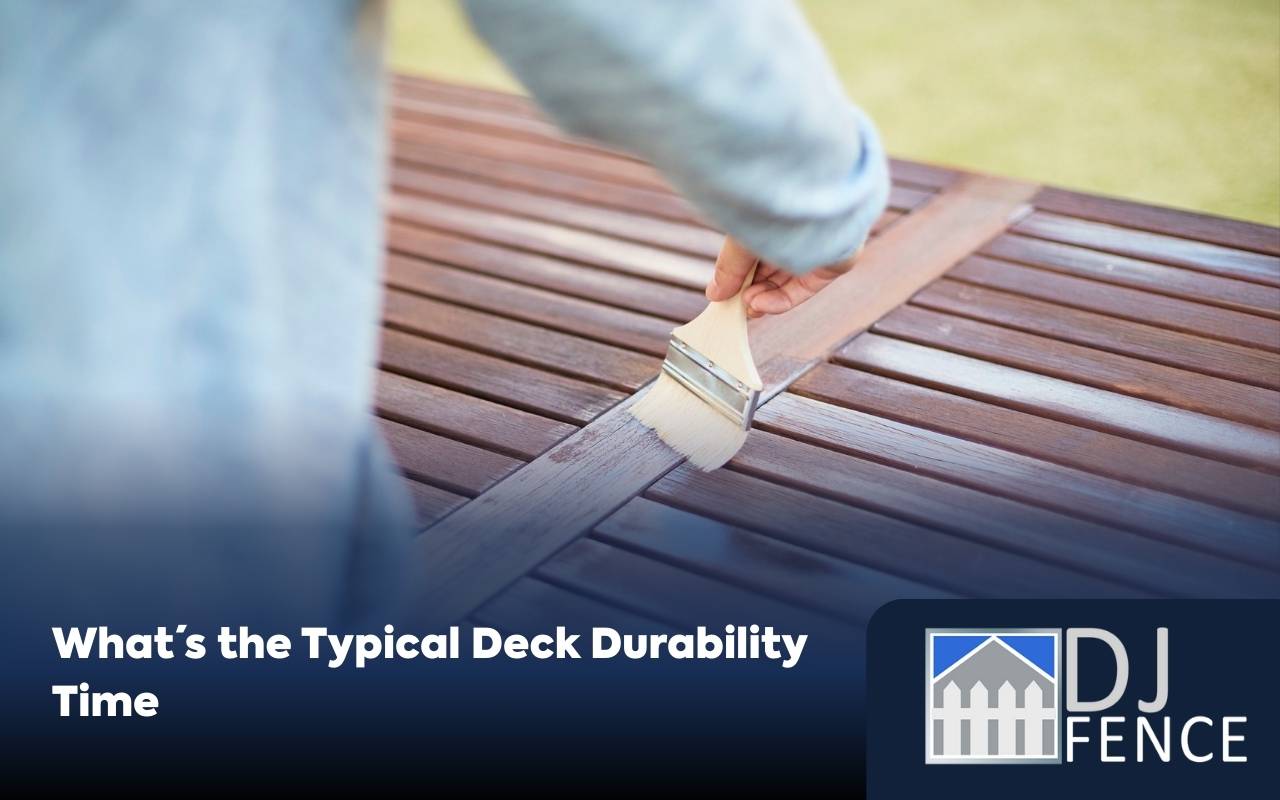
Your backyard deck is more than just wooden planks. It’s where family gatherings, barbecues, and peaceful mornings unfold. However, you might wonder how long it will last. Understanding the typical deck durability time makes the difference between lasting enjoyment and sudden repairs. Lifespan depends on materials, climate, and maintenance habits. Studies show wood decks last between 10 and 30 years. This wide range highlights why proactive care is vital. Let’s explore the elements that influence durability and how you can extend your deck’s service life.
Factors Affecting Deck Durability
Many factors influence the typical deck durability time. Structural design and installation quality come first. Proper joist spacing, footings, flashing, and fasteners prevent early rot and warping. Poor installation reduces lifespan even with premium materials. Load and usage patterns also matter. Heavy planters, hot tubs, and frequent gatherings strain beams. Distribute weight evenly and avoid unsupported loads. Finally, local weather plays a large role. Freeze-thaw cycles, UV intensity, and humidity affect longevity. A deck in a dry climate will generally outlast one in a wet, snowy region.
- Proper structural design and quality installation
- Load distribution and usage habits
- Local climate conditions and exposure
Importance of Material Choice
Material choice greatly impacts the typical deck durability time. Pressure-treated lumber is affordable and insect resistant, lasting 10–20 years with care. Hardwoods like ipe or tigerwood can last 25–40 years due to their density. Composite decking offers low maintenance, warranties of 25–30 years, and reliable performance. PVC options resist stains and scratches but cost more initially. Each material has strengths, so align your choice with budget, climate, and maintenance willingness.
- Pressure-treated wood: 10–20 years with regular care
- Hardwoods: 25–40 years of natural resistance
- Composite and PVC: durable and low-maintenance
Impact of Weather Exposure
Weather exposure directly affects the typical deck durability time. UV rays weaken wood fibers and cause fading. Moisture promotes rot, mold, and fungal growth. Freeze-thaw cycles split boards and create cracks. Salt-laden coastal air accelerates corrosion and discoloration. Smart strategies like pergolas, drainage systems, and seasonal covers protect against harsh conditions. With effective shielding, decks remain stronger for longer.
- Protect against UV damage with stains and sealers
- Promote drainage and ventilation beneath decking
- Cover or shield in harsh seasonal conditions
Maintenance Practices for Longevity
Routine maintenance ensures the typical deck durability time reaches its maximum. Annual inspections spot loose boards, rusted fasteners, and early rot. Monthly sweeping removes debris and reduces mold. Deep cleaning once a year with mild detergent eliminates embedded dirt. Moderate pressure washing can help if performed carefully. After cleaning, apply sealers or stains to protect the surface. Trim landscaping for airflow, which keeps surfaces dry and durable.
Signs of Deck Deterioration
Recognizing early warning signs saves money and extends the typical deck durability time. Soft areas signal wood rot. Splintering or raised grain shows weakened surfaces. Mold growth, discoloration, and mildew trap moisture. Loose nails, wobbly railings, and creaking boards are safety concerns. Detecting these problems early allows timely repairs, preventing further decline.
Repair vs. Replacement Considerations
Deciding between repair or replacement requires careful evaluation. Small repairs such as tightening fasteners or replacing a few boards extend lifespan cost-effectively. However, when multiple components fail, full replacement becomes necessary. Professional inspection determines when repair costs outweigh replacement benefits. A rebuild resets the clock on your deck’s typical deck durability time and ensures compliance with modern codes.
Enhancing Durability Through Sealing and Staining
Sealing and staining preserve wood strength and beauty. Transparent sealers protect against moisture, while pigmented stains block UV rays. Apply sealers every one to two years and stains every three years. Always clean and dry before applying. Choose oil-based sealers for pressure-treated lumber or water-based formulas for hardwoods. These practices strengthen resistance and boost the typical deck durability time.
Professional Inspection and Maintenance Services
Professional services enhance safety and performance. Inspectors detect hidden decay, insect infestations, and corrosion. Contractors clean, seal, and repair with precision. Though it requires upfront investment, professional care prevents failures and lengthens deck life. Consider hiring an expert annually to maintain safety and compliance.
Sustainability Practices for Long-Term Deck Health
Sustainable choices also influence the typical deck durability time. FSC-certified wood and recycled composites lower environmental impact. Bamboo decking lasts 20–25 years and is highly renewable. Low-VOC sealers protect both the deck and air quality. Managing water runoff prevents erosion and moisture damage. Recycling old boards into planters or benches reduces waste. Eco-friendly practices protect both your deck and the environment.
FAQs
How long does a wooden deck usually last?
A wooden deck generally lasts 10–30 years, depending on maintenance and climate.
What materials provide the longest durability?
Hardwoods, composite, and PVC decks often offer the best lifespan and performance.
Can weather reduce deck lifespan significantly?
Yes, moisture, UV rays, and freeze-thaw cycles can shorten durability if unprotected.
Is professional maintenance necessary?
While not required, professional services help extend deck life and ensure safety.
How can I make my deck more sustainable?
Choose certified wood, recycled materials, and eco-friendly sealers for sustainable decking.
Maximizing Your Deck’s Lifespan
Securing the longest typical deck durability time requires commitment. Choose the right materials, protect against weather, and maintain regularly. Detect early damage and decide wisely between repair or replacement. Sealing, staining, and professional inspections add value and confidence. For expert help, connect with our team today. Explore deck options, learn about year-round care, or consult a trusted deck builder to maximize durability.
